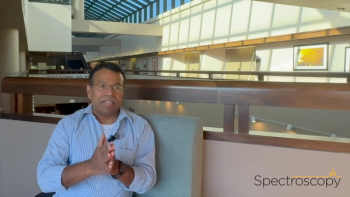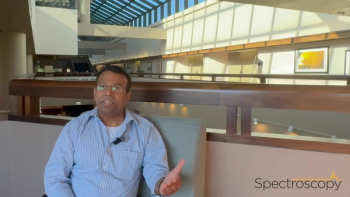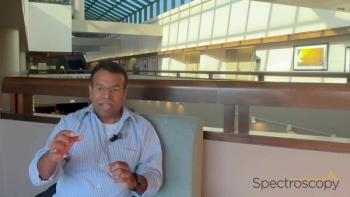
Best of the Week: 2024 Spectroscopy Employment Survey, NMR to Uncover Biomarkers
Here are the top five articles that the editors of Spectroscopy published this week.
This week, Spectroscopy published a variety of articles on the hottest topics in analytical science. Below, we’ve highlighted some of the most popular articles, according to our readers. Happy reading!
Research Using NMR Uncovers New Biomarkers of Metabolic Syndrome
Óscar Millet
Metabolic syndrome (MetS) is a mix of five conditions that includes abdominal obesity, diabetes, and high blood pressure, with one quarter of the world’s population estimated to have this condition. Diagnosing MetS can be challenging, as there is a lack of consensus about the condition’s definition. While it is associated with poor lifestyle choices, there are also genetic factors that put people at higher risk. Óscar Millet, principal investigator at the CIC bioGune in Bilbao, Spain, has been researching MetS for years. In this article, he discusses what he knows about MetS and how his team is using nuclear magnetic resonance (NMR) spectroscopy to characterize the disease’s biomarkers at different stages of its progression.
2024 Spectroscopy Employment Survey: Continuing Economic Pressures, and How It Impacts Spectroscopists
Will Wetzel
Every year, Spectroscopy publishes a survey of our readership, detailing the latest trends in the job market. Last year’s survey covered how analytical scientists were worried about greater uncertainties in the job market, with different countries experiencing economic recessions and mass layoffs. This year, more of the same concerns were reported, with more scientists remaining in their current roles rather than seeking new opportunities. Topics featured within this year’s employment survey include salary and compensation, work environments and seeking alternative employment, a look at the current job market, and demographics and methodology.
University of Wisconsin Graduate Student Wins 2024 Young Chemist Award
Aaron Acevedo
Metrohm USA announced that Katelyn Michael, a graduate student from the University of Wisconsin, Madison, is the 2024 winner of its Young Chemist Award. The $10,000 award is given out annually to a scientist whose research “transforms the landscape of chemistry.” Michael’s study, titled “Tandem Electrochemical Advanced Oxidative Processes to Effectively Degrade Perfluorooctanesulfonic Acid (PFOS),” addresses environmental challenges stemming from per- and polyfluoroalkyl substances (PFAS). Based on a novel electrochemical approach, Michael builds on existing methods in hopes of greatly enhancing the degradation efficiency of PFOS.
New Method Predicts Pesticide Toxicity to Humans and Environment
While pesticides are essential to protect and preserve crops, many contain chemical compounds that can harm non-target organisms, including humans. These chemicals can also emerge in the environment and contaminate water sources, soil, and food chains, endangering biodiversity and ecosystems in the process. This has led to a need for sustainable and eco-friendly pest management strategies that minimize the need to use pesticides. As part of this, a recent study from researchers at Heilongjiang University in Harbin, China, introduced a novel approach that incorpates the interaction between pesticides, specifically acetolactate synthase inhibitor herbicides (ALS inhibitor herbicides), and environmental markers into toxicity prediction models.
Micro-Raman Spectroscopy to Analyze Layered Manganese Oxide Structures
Aaron Acevedo
Manganese oxide minerals have been used for thousands of years, initially for pigment creation but now for making catalysts and battery materials. These oxides are mainly formed from MnO6 octahedra, which can share corners and edges to form specific structures and be tunneled or layered together. In a recent study from Ghent University in Ghent, Belgium and Charles University in Prague, Czech Republic, researchers discussed the characterization of different layered manganese oxide structures via different types of Raman spectroscopy.
Newsletter
Get essential updates on the latest spectroscopy technologies, regulatory standards, and best practices—subscribe today to Spectroscopy.





